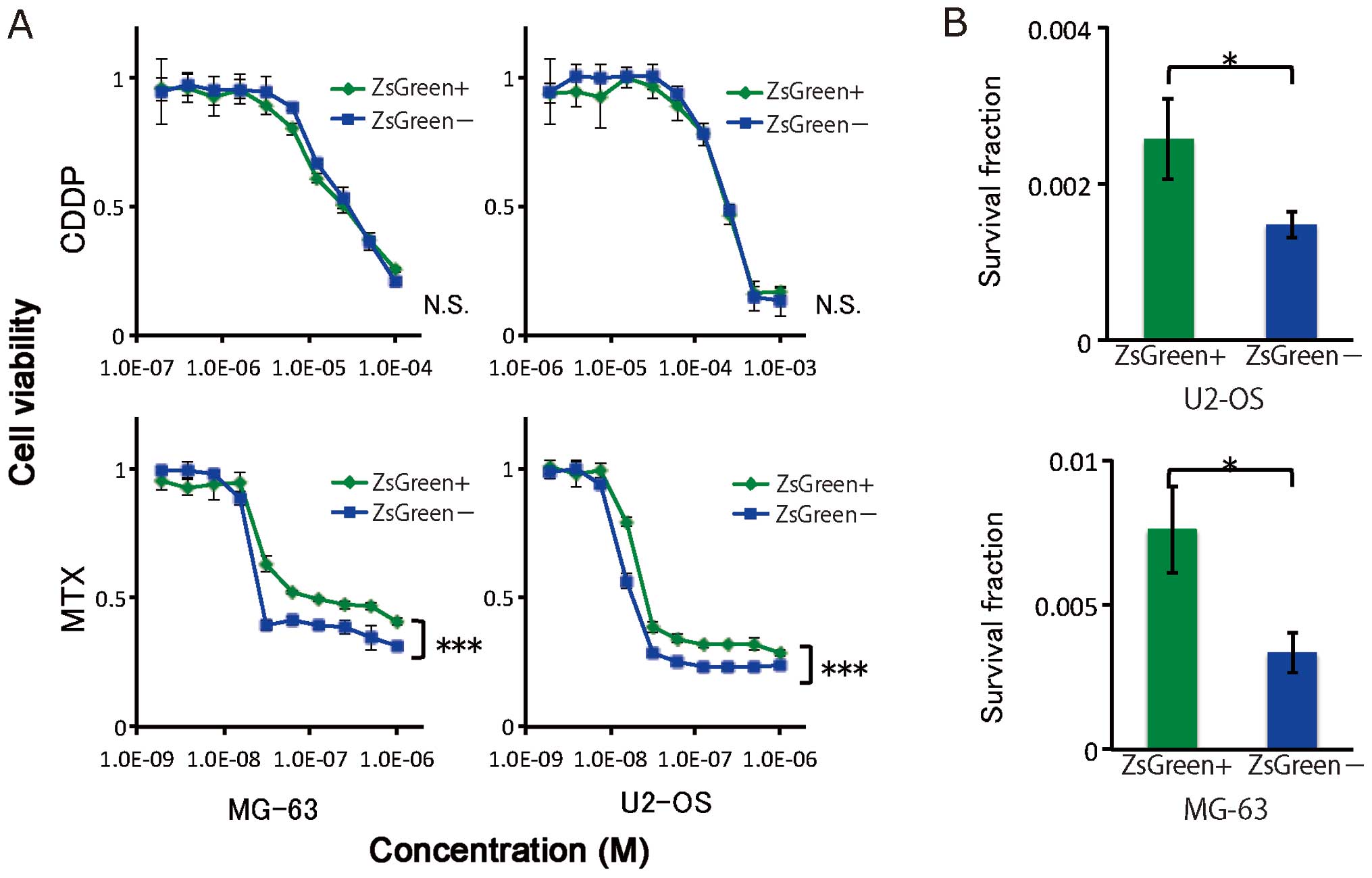Identification of chemoradiation-resistant osteosarcoma stem cells using an imaging system for proteasome activity
- Authors:
- Published online on: September 24, 2014 https://doi.org/10.3892/ijo.2014.2671
- Pages: 2349-2354
Metrics: Total
Views: 0 (Spandidos Publications: | PMC Statistics: )
Total PDF Downloads: 0 (Spandidos Publications: | PMC Statistics: )
Abstract
Osteosarcoma is the most common primary bone malignancy in pediatric and adolescent populations. Recurrence and metastatic potential can be due to a subpopulation of cells with stem cell-like characteristics, such as tumor-initiating cells (TICs), which maintain the capacity to regenerate entire tumors. Targeting the TICs in osteosarcoma is a promising avenue for the development of new therapies for this devastating disease. TICs are usually quiescent with a low protein turnover, decreased metabolism, and downregulation of proteasome activity. Recently, cancer cells with low proteasome activity have been identified as TICs in several types of cancer. We stably infected two osteosarcoma cell lines, MG-63 and U2-OS, with an expression vector for a fusion protein between the green fluorescent protein, ZsGreen, and the C-terminal degron of the murine ornithine decarboxylase to monitor the 26S proteasome activity in living cells. We separated the osteosarcoma cells with low proteasome activity using fluorescence-activated cell sorting (FACS) and verified whether these ZsGreen+ cells had TIC-like properties. The ZsGreen+ cells showed enhanced sphere formation capacity and underwent asymmetric divisions into ZsGreen+ and ZsGreen- cells, whereas ZsGreen- cells underwent only symmetric divisions into ZsGreen- cells. Moreover, the ZsGreen+ cells were more chemo- and radioresistant. Thus, the present study demonstrated that chemoradiation-resistant TICs can be visualized by this system and suggested the rationale for further study of osteosarcoma stem cells.














